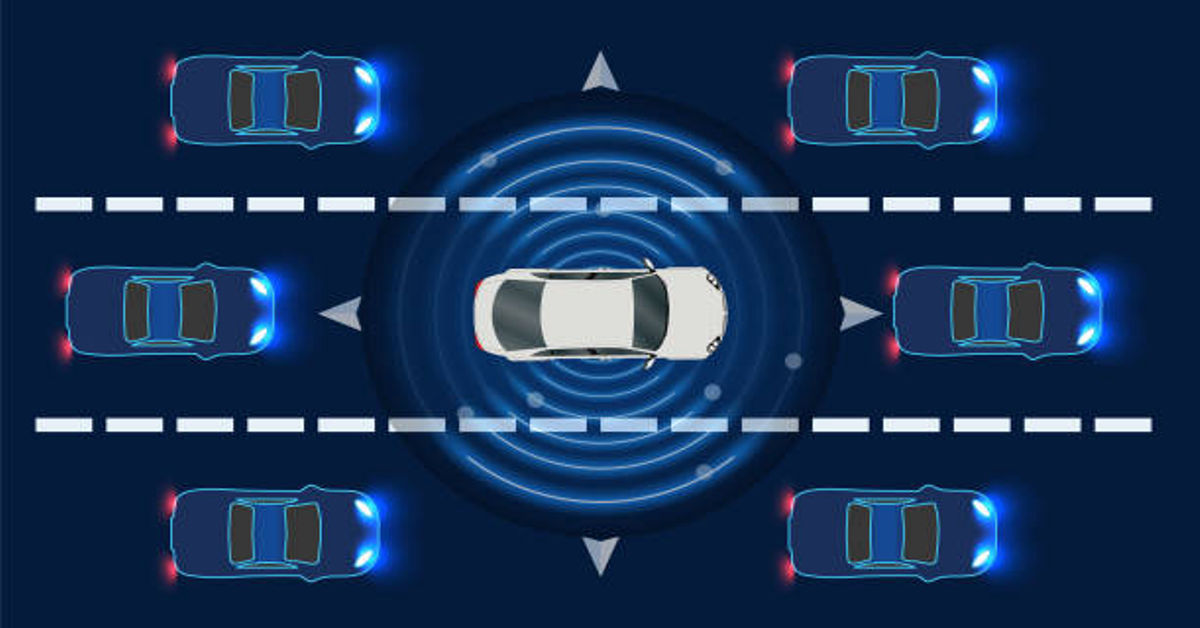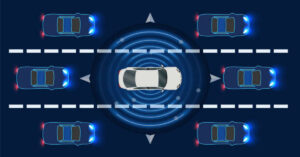In the evolving landscape of modern transportation, vehicles are no longer purely mechanical systems; they are becoming sophisticated mobile computing platforms that integrate digital intelligence, sensors, and real-time communication technologies. Among the innovations that have transformed road safety and driving efficiency, top driver signals technology has emerged as a critical component. Driver signal technologies encompass a wide spectrum of tools and systems designed to enhance situational awareness, improve communication between vehicles, reduce accidents, and optimize traffic flow. These signals are not limited to conventional turn indicators or brake lights; they increasingly integrate advanced visual, auditory, haptic, and wireless communication signals, providing drivers, pedestrians, and other road users with actionable information to make safer and more efficient driving decisions.
Driver signals are at the heart of modern Advanced Driver Assistance Systems (ADAS), including lane change alerts, adaptive cruise control indicators, collision avoidance warnings, and pedestrian detection signals. These technologies rely on a combination of embedded sensors, cameras, LiDAR, radar, connectivity networks, and intelligent algorithms. By examining the mechanisms, benefits, and applications of top driver signals technology, one can understand how the integration of these systems is reshaping traffic safety, driving behavior, and the evolution of semi-autonomous and autonomous vehicles.
What Is Driver Signals Technology?
Driver signals technology refers to the systems and mechanisms that communicate a vehicle’s actions, intentions, or detected hazards to its driver or other road users. While the traditional driver signals such as turn indicators and brake lights have existed for decades, contemporary technology has vastly expanded the concept. Modern systems include:
- Visual signals: Advanced LED lighting patterns, head-up displays, digital dashboard alerts, dynamic turn signals, and hazard indicators.
- Auditory signals: Warning sounds for lane departure, collision alerts, parking sensors, and pedestrian alerts.
- Haptic signals: Vibrations through steering wheels or seat systems to warn drivers of lane drift, nearby obstacles, or impending collisions.
- Wireless vehicle-to-vehicle (V2V) and vehicle-to-infrastructure (V2I) signals: Digital communication that allows cars to broadcast braking, lane changes, or hazard events to nearby vehicles and traffic management systems.
The objective of these systems is to enhance situational awareness, reduce human error, and support decision-making, particularly in environments where traffic density, weather, and road conditions introduce complexity and risk.
Importance of Driver Signals Technology
Accidents caused by human error remain the leading cause of road fatalities worldwide. Modern driver signal technologies address several core issues:
- Early Hazard Detection: Systems alert drivers of obstacles, sudden stops, or lane encroachments before they become critical.
- Improved Communication: By broadcasting vehicle intentions, such as braking or lane changes, signals reduce misinterpretation among drivers.
- Enhanced Traffic Flow: Synchronized signals allow smoother traffic management by reducing abrupt stops, unnecessary lane changes, and congestion.
- Support for Autonomous Systems: Autonomous and semi-autonomous vehicles rely heavily on driver signals to communicate intentions to humans and other AI-driven systems on the road.
Without these systems, vehicles would rely solely on human perception, reaction time, and traditional mechanical signaling methods, which are insufficient in preventing modern-day accidents, particularly in dense urban environments.
Core Components of Top Driver Signals Technology
Driver signal systems are multifaceted, combining hardware, software, and connectivity modules. Below is a detailed look at the major components:
1. Sensors
Sensors are the fundamental building blocks of modern driver signal technology. They collect real-time data about vehicle surroundings, road conditions, and driver behavior. Common types include:
- Radar: Measures object distance and speed, useful in adaptive cruise control and blind-spot monitoring.
- LiDAR: Creates precise 3D maps of the surroundings for collision detection and autonomous navigation.
- Ultrasonic Sensors: Detect close-range obstacles, typically used in parking assist.
- Cameras: Provide lane recognition, traffic sign reading, and pedestrian detection.
- Infrared Sensors: Enhance night vision capabilities and detect heat-emitting objects.
2. Signal Processing Units
Raw sensor data is meaningless without intelligent interpretation. Signal processing units (SPUs) convert data into actionable information using:
- AI and Machine Learning Algorithms: Predict driver behavior, detect hazards, and optimize response timing.
- Real-time Data Fusion: Combines data from multiple sensors to improve accuracy and reliability.
- Control Logic Systems: Decide which alerts or signals to transmit to the driver or nearby vehicles.
3. Output Modules
Once processed, signals are communicated through visual, auditory, or haptic feedback. This is the point at which the driver or the surrounding environment becomes aware of vehicle intentions or hazards:
- Dashboard Indicators: Highlight lane departure, engine warnings, or forward-collision alerts.
- Head-Up Displays (HUD): Projects crucial information directly onto the windshield for minimal distraction.
- Haptic Feedback: Steering wheel or seat vibrations prompt drivers to take corrective actions.
- Vehicle Lighting: Flashing brake lights, turn signals, and hazard indicators alert nearby vehicles and pedestrians.
4. Connectivity Systems
Connectivity enhances driver signal technology by enabling communication beyond the immediate vehicle environment:
- Vehicle-to-Vehicle (V2V): Vehicles share information about braking, lane changes, and collisions.
- Vehicle-to-Infrastructure (V2I): Communicates with traffic lights, road sensors, and city management systems.
- Cloud Integration: Enables software updates, remote monitoring, and predictive analytics to improve signal systems continuously.
Applications of Driver Signals Technology
The applications of advanced driver signals extend across numerous driving scenarios. Below is a detailed table showcasing typical applications:
| Application | Description | Benefits | Example Features |
|---|---|---|---|
| Lane Departure Warning | Alerts when vehicle unintentionally drifts out of lane | Prevents collisions, reduces fatigue | Steering wheel vibration, HUD alert |
| Blind Spot Detection | Monitors adjacent lanes for unseen vehicles | Reduces side-impact risk | LED mirrors, audible warnings |
| Adaptive Cruise Control | Adjusts speed based on traffic | Smooth traffic flow, fuel efficiency | Radar-based speed control |
| Forward Collision Warning | Detects imminent collision | Minimizes rear-end crashes | Brake warning, automatic emergency braking |
| Pedestrian Detection | Identifies pedestrians near the vehicle | Enhances urban safety | Camera-based alerts, autonomous braking |
| Turn/Brake Signals | Communicates driver intentions | Reduces confusion, improves traffic | Dynamic LED lights, early flash sequences |
| Parking Assist | Guides parking maneuvers | Prevents collisions in tight spaces | Ultrasonic sensors, haptic feedback |
Advantages of Modern Driver Signals Technology
- Enhanced Safety: Early alerts and communication drastically reduce the likelihood of accidents.
- Reduced Driver Stress: Continuous monitoring and assistance ease cognitive load on drivers.
- Fuel Efficiency: Optimized traffic flow and smooth braking reduce unnecessary fuel consumption.
- Integration with Autonomous Vehicles: Serves as the backbone for semi-autonomous and fully autonomous vehicles.
- Global Traffic Optimization: Vehicle signals integrated into smart city infrastructure improve traffic management on a macro scale.
Limitations and Challenges
Despite remarkable advancements, driver signals technology faces several challenges:
- High Cost: Integrating sensors, AI processing, and connectivity increases vehicle prices.
- Complex Maintenance: Sensor alignment and calibration require specialized service.
- Cybersecurity Risks: Connected systems can be vulnerable to hacking if not secured.
- Driver Over-Reliance: Excessive dependence on technology may reduce human attentiveness.
- Environmental Interference: Rain, fog, snow, and glare can reduce sensor accuracy.
Future Trends in Driver Signals Technology
The next decade will likely see driver signal systems become more intelligent, adaptive, and interconnected:
- Autonomous Communication Networks: Vehicles communicating with one another to avoid accidents preemptively.
- AI-Driven Predictive Alerts: Systems predicting driver intent and external hazards before they occur.
- Integration with Smart Infrastructure: Traffic lights, tolls, and parking sensors communicate directly with vehicles.
- Holographic and Augmented Reality Signals: HUDs and AR systems projecting real-time signals onto the windshield or environment.
- Biometric Driver Monitoring: Signals adjust based on driver fatigue, attention, and health metrics.
Driver Signals Technology in Commercial and Fleet Vehicles
While consumer vehicles benefit from driver signals primarily for safety and convenience, commercial vehicles gain significant operational advantages:
- Fleet Optimization: Real-time data from driver signals enables routing efficiency and hazard avoidance.
- Regulatory Compliance: Signals integrated with telematics help monitor speed, braking, and driver behavior for compliance.
- Accident Liability Reduction: Real-time alerts reduce the frequency and severity of collisions.
- Predictive Maintenance: Sensors detect irregular behavior that may indicate mechanical issues before they escalate.
Conclusion
Top driver signals technology represents one of the most transformative advances in modern mobility. By integrating real-time sensors, AI-driven data processing, connectivity systems, and intelligent signal output, these technologies make driving safer, smoother, and more efficient. From lane departure alerts to autonomous vehicle communication networks, driver signal technology is central to reducing accidents, optimizing traffic, and creating a more connected transportation ecosystem. As the automotive industry moves toward higher automation, smarter cities, and intelligent infrastructure, the role of driver signals technology will expand, becoming indispensable in achieving safer and more efficient roads worldwide.
Frequently Asked Questions (FAQs)
1. What is driver signals technology?
It refers to systems that communicate a vehicle’s actions, intentions, or hazard detection to drivers and surrounding road users.
2. How do modern driver signals improve safety?
By providing real-time alerts through visual, auditory, haptic, or wireless communication, reducing reaction times and preventing accidents.
3. Are driver signals technology systems only for luxury cars?
No, while advanced systems are more common in premium vehicles, many ADAS features are now available in mid-range cars.
4. How does connectivity enhance driver signals technology?
V2V and V2I communications allow vehicles to share information with other cars and infrastructure, improving safety and traffic flow.
5. What future advancements are expected in driver signals technology?
Future trends include AI predictive alerts, AR/HUD signals, autonomous network communication, and driver biometrics integration.









